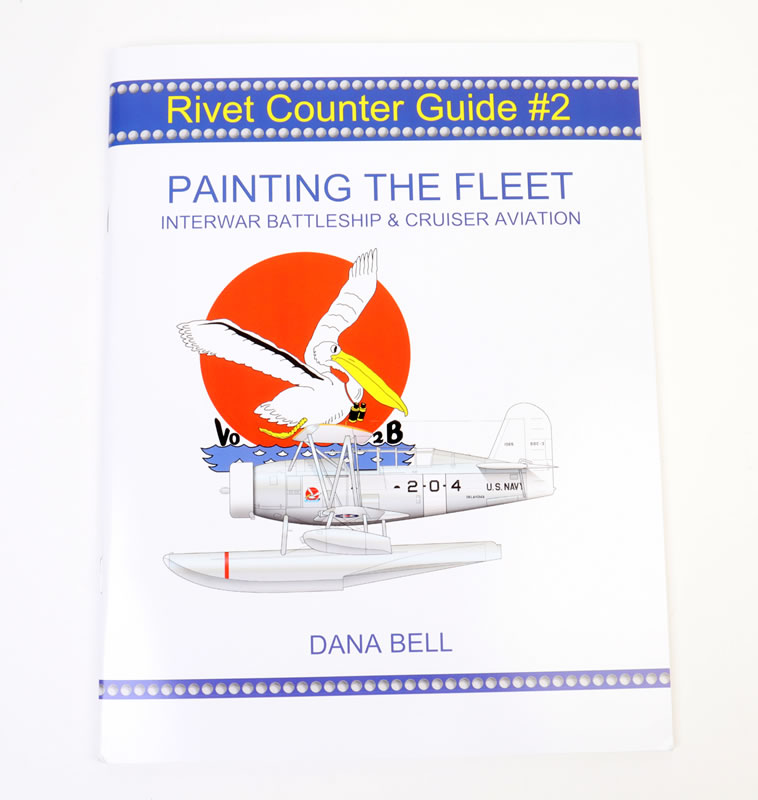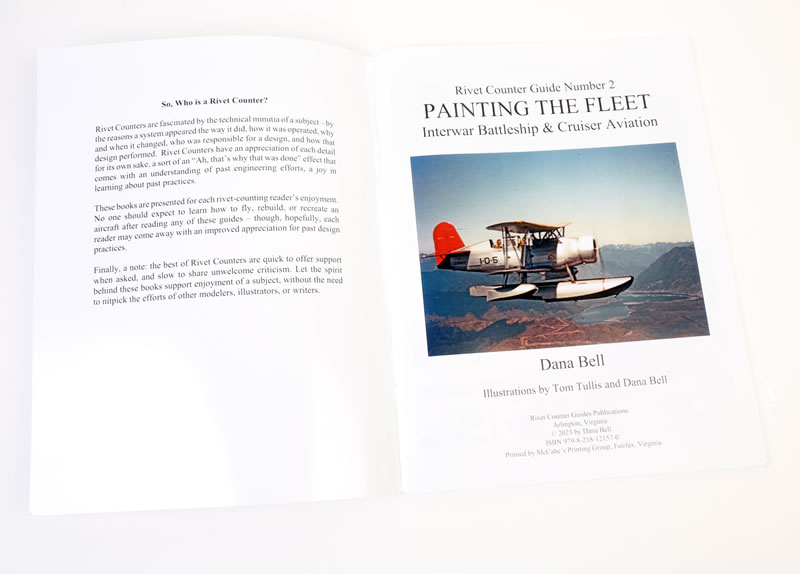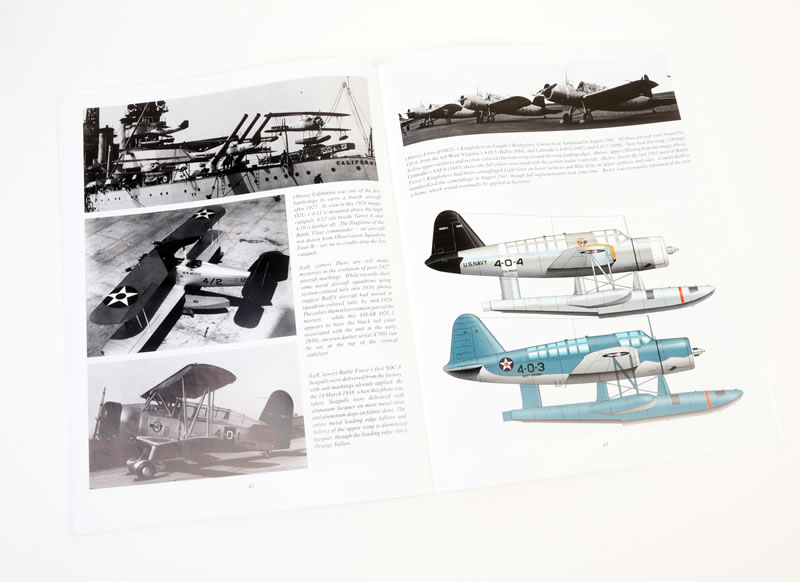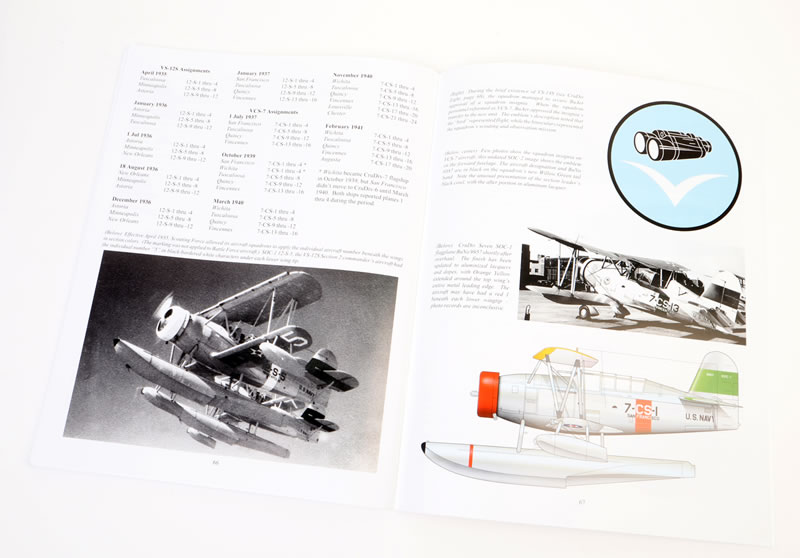Painting the Fleet
Interwar Battleship and Cruiser Aviation

by Dana Bell
Rivet Counter Guide #2
S u m m a r y |
| Publisher and Title: |
Rivet Counter Guide #2
Painting the Fleet
Interwar Battleship and Cruiser Aviation
by Dana Bell |
| ISBN: |
979-8-218-12157-0 |
| Media: |
Soft cover, 8.5 x 11 inch, 72 pages plus covers. |
| Price: |
USD $29.95 Plus Shipping on ebay |
| Review Type: |
First Read |
| Advantages: |
Very well printed on quality paper with excellent reproduction of all images, and a great deal of new information gleaned from the National Archives to update this complex area of aircraft colours. |
| Disadvantages: |
None noted |
| Conclusion: |
If this is your interest area, then this is a highly recommended volume from Dana Bell and what’s not to like about these colourful aeroplanes from a time when the biplanes were starting to be replaced by monoplanes. |
Reviewed by Graham Carter

As the ‘blurb’ sheet that accompanies this 72-page A4 volume states “The history of US Navy colors (sic) and markings is one of numerous aircraft types and frequently-changing identification colors (sic) and markings” and this is the first attempt in over 35 years to clarify the situation with the availability of original source documents from the National Archives. It would appear that this is first in a series of volumes aimed at historians and modellers to clarify the interwar colour situation, in this case focussing on the aircraft assigned to battleships and cruisers. Again quoting from the sheet, this volume presents “ . . . a fresh examination of the topic and many startling revelations”. As such we should note that ‘Interwar’ in the US covers the period up until 1941, and not 1939 as used in Europe.

The monograph includes full-colour squadron insignia, 60 colour and 105 B&W photos, full-colour representative aircraft by artist Tom Tullis, a new explanation of the Battle Fleet 1925-26 marking system, an examination and explanation of the experimental markings from 1925 to 1930, a first-ever review of the Navy’s odd 1927-28 3-squadron, 3-aircraft-types assignment system, a full explanation of the evolution of the yellow-wing on SOC Seagull aircraft and histories of period battleship and cruiser divisions along with their fuselage codes for all types of aircraft from 1925 until 1941.

The book is quality printed on glossy paper which allows great photo and drawing reproduction and none of them impinge on the stapled centre-line. The photos are all of excellent quality and have very clear annotations, and it is wonderful to see such clear colour images from 85-90 years ago, along with the quality B&W images as well. The colour profiles are all clear and large enough to be very useful. In addition there is a loose card containing a Glossary of terms used in the book, handy to have when trying to unravel some of the complex nomenclature used when identifying squadrons, ships and aircraft.

The book is broken up into twelve sections, as follows:
-
Organisation and Experiments
-
Launch and recover
-
Basic colours
-
SOC Wings
-
Basic Markings
-
Serials & Unit Markings
-
Flagplanes
-
Asiatic Fleet
-
Battleship aircraft colours (broken down by division)
-
Cruiser aircraft colours (same as above)
-
Tail Colours
-
Squadron Insignias
If this is your interest area, whether from a modeller’s or an historian’s point of view then this will be a very valuable addition to your library and should be instrumental in us seeing some very colourful and, now, accurately-finished models on the table.
Thoroughly recommended.
Review Copyright © 2024 by Graham Carter
This Page Created on 17 January, 2024
Last updated
18 January, 2024
Back to HyperScale Main Page
Back to Reviews Page
|
